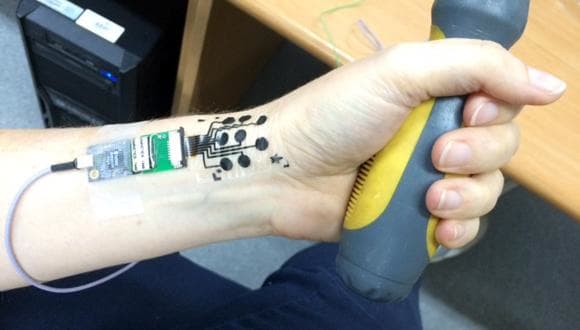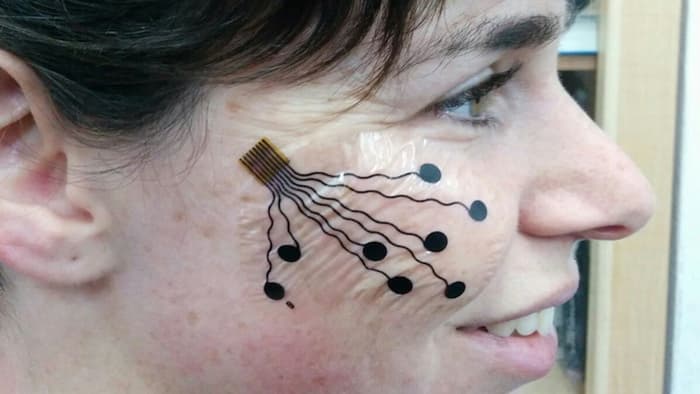
Neuromuscular disorders, such as multiple sclerosis and spinal muscular atrophy, are diagnosed through electromyography, invasive procedures that insert needle electrodes into patients’ muscles to record electrical signal and verify whether a condition is present. Patients often experience a minor spasm when these electrodes transmit a brief electrical current, and, as with anything needle-related, may later find bruising where the needle was inserted. Researchers at Tel Aviv University’s (TAU) Center for Nanoscience and Nanotechnology have developed a more comfortable diagnosing method in the form of a three-part electronic “tattoo,” which easily screens muscle activity.
Similar to the design of temporary tattoos, the electronic tattoo obviously goes a few steps further. According to TAU professor Yael Hanein, the three components are “a carbon electrode, and adhesive surface that sticks temporary tattoos to the skin, and a nanotechnology-based conductive polymer coating, with special nanotopography, that enhances the electrode’s performance.” Readily available materials and conventional industrial printing techniques were used to speed up the development process, adds Hanein.

Together, the elements help the tattoo attach to the skin of the trackable muscle and allow users to continue with their regularly scheduled day. As they go about their routines, the electrode measures and tracks muscle activity without agitating skin. The electrode has previously been used to monitor muscles of those with neurodegenerative diseases, but researchers’ other plans include its use in helping stroke victims through rehabilitation and assisting amputees in controlling artificial limbs with other muscles. Having this measurement of muscles’ physiological data could also display how alert drivers are on the road.
Another possible function for the electrode is mapping users’ emotions. “The ability to identify and map people’s emotions has many potential uses,” said Hanein. “Advertisers, pollsters, media professionals…all want to test people’s reactions to various products and situations.” Having no accurate scientific tools to rely on, these investigators turn to subjective questionnaires. By applying the skin electrode to these situations, scientists can monitor expressions and emotions based on facial muscles’ electric signals. Other scientists’ expression detection methods are based on photos and smart software, but this is the only prominent system with a more direct solution.
The research team presented the findings at an international nanomedicine program at the university in June. While the electric tattoo could soon provide interesting information about people’s emotions, for now it is praised for its contributions to the modern practice of medicine. “The idea is to stick it on and forget about it,” said Hanein.
Source: Mayo Clinic, Tel Aviv University, Gizmag, MedlinePlus, ScienceDaily
Advertisement
Learn more about Electronic Products Magazine





